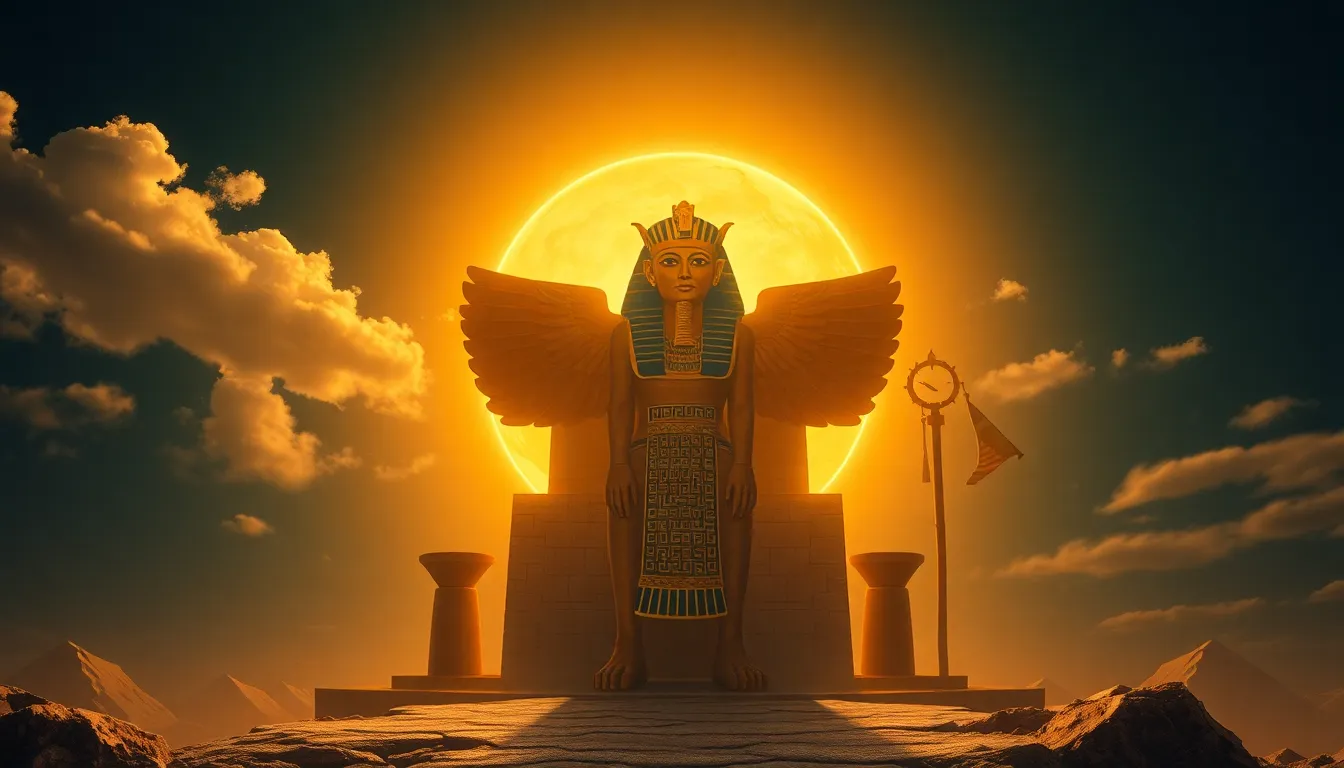The Story of Ra: The Sun God’s Daily Journey
I. Introduction to Ra
Ra, one of the most important deities in ancient Egyptian mythology, is revered as the god of the sun. He embodies the essence of light and warmth, playing a critical role in the daily life and spiritual beliefs of the ancient Egyptians. The sun, a symbol of life and fertility, was integral to the Egyptian worldview, influencing agricultural cycles and religious practices.
This article aims to delve into Ra’s daily journey across the sky, exploring the mythological significance of his path from dawn to dusk, and how this journey reflects the ancient Egyptians’ understanding of life, death, and the cosmos.
II. The Birth of Ra
Ra’s origins can be traced back to several creation myths in ancient Egyptian mythology. One popular narrative describes his emergence from the primordial waters of chaos, known as Nun. As the first being, Ra is often depicted as a self-created god, born from a lotus flower that rose from the waters, symbolizing purity and creation.
The symbolism of light plays a crucial role in Ra’s birth. As the sun god, he represents the life-giving force of the sun, illuminating the world, and dispelling darkness. His emergence signifies the victory of order over chaos, embodying the ancient Egyptians’ belief in the cyclical nature of existence.
III. Ra’s Daily Journey Across the Sky
Ra’s daily journey is a remarkable tale that illustrates his path from dawn to dusk. Each morning, he is reborn in the east, bringing light and warmth to the world. The sunrise symbolizes hope, renewal, and the triumph of light over darkness.
Throughout the day, Ra travels across the sky in his solar barque, a magnificent vessel that glides through the heavens. As the sun sets in the west, it signifies the end of the day and the return to the underworld, where Ra must prepare for his nightly journey.
The significance of this journey extends beyond mere symbolism; it regulates time for the ancient Egyptians. The movement of the sun dictated their daily activities, agricultural practices, and religious observances.
IV. The Solar Barque: Ra’s Chariot
The solar barque is an essential aspect of Ra’s daily travels. Described as an ornate and powerful vessel, it is often depicted in ancient art as a beautifully crafted boat, symbolizing Ra’s divine power and authority.
In Ra’s journey, several mythical creatures and deities accompany him, including:
- Ma’at: The goddess of truth and order, ensuring that Ra’s journey maintains cosmic balance.
- Horus: Often associated with kingship and the sky, he represents the living pharaoh’s connection to the divine.
- Set: Sometimes viewed as an adversary, he embodies chaos and storms, providing a contrast to Ra’s order.
V. Challenges Faced During the Journey
Despite his divine status, Ra faces numerous challenges during his journey across the sky. One of the most formidable adversaries is the serpent Apep (also known as Apophis), a symbol of chaos and darkness. Each night, Apep attempts to swallow Ra, bringing darkness to the world.
Ra’s battles against darkness and chaos highlight the ongoing struggle between order and disorder. To aid him in these challenges, other deities often intervene, assisting Ra in his quest to maintain balance in the universe.
VI. The Afterlife and Ra’s Influence
Ra’s significance extends beyond the realm of the living; he plays a crucial role in the afterlife. The ancient Egyptians believed that the deceased would journey through the underworld, where they would encounter Ra. His presence in the afterlife was seen as a guiding light, leading the souls of the departed toward rebirth.
The connection between Ra and the afterlife is further emphasized through temples and rituals dedicated to him. The ancient Egyptians constructed magnificent temples to honor Ra, where priests performed rituals to ensure his favor and maintain cosmic order.
VII. Cultural Depictions of Ra
Ra’s influence permeates ancient Egyptian art and literature. He is frequently depicted in various forms, often as a falcon-headed man crowned with a solar disk, symbolizing his dominance as the sun god. These artistic representations served not only to honor Ra but also to reinforce the cultural values surrounding his worship.
In literature and religious texts, Ra is featured prominently in hymns, prayers, and spells that highlight his power and benevolence. His legacy continues to inspire modern interpretations, with Ra often appearing in contemporary literature, films, and popular culture.
VIII. Conclusion
In conclusion, Ra occupies a central place in Egyptian mythology, symbolizing the sun’s life-giving power and the eternal struggle between light and darkness. His daily journey across the sky serves as a powerful metaphor for renewal, order, and the cyclical nature of life.
Reflecting on Ra’s enduring legacy, we see how his mythos has transcended time, continuing to resonate in contemporary culture. From ancient temples to modern interpretations, Ra’s journey remains a testament to the ancient Egyptians’ deep reverence for the sun and its significance in their lives.
As we explore Ra’s journey, we are reminded of the fundamental human experiences of hope, struggle, and the quest for balance in a chaotic world.




